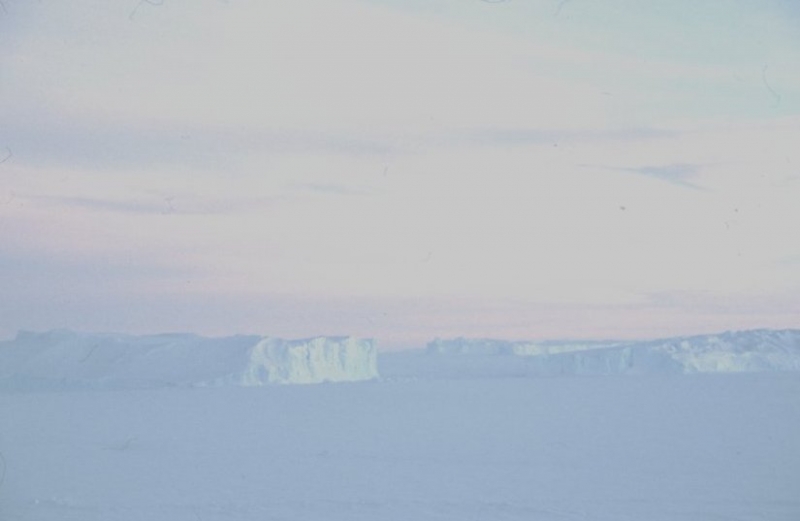A total solar eclipse is an unforgettable experience anywhere in the world but to stand beneath the Moon’s shadow in Antarctica must surely be the most memorable.
I was fortunate to be one of the 98 passengers on board the Russian icebreaker ‘Kapitan Khlebnikov’ which made its way through the field ice to the Davis Sea where we were one of the first people to experience a total solar eclipse in Antarctica.
An ‘inconsiderate cloud’ covered much of totality giving us only a glimpse of the corona and a brief flash of the diamond ring but it meant that I could concentrate on the moon’s shadow as it rushed like a huge storm cloud across the ice and stranded icebergs, and marvel at the pink and gold colours on the horizon.
For us on local ‘ship time’ totality occurred at 6:36am on 24 November 2003, ship time being UT +8hrs. Our position was 65º 55’S and 89º 16’E.
Valarie Stoneham
Images by Valarie Stoneham
On our journey to the eclipse site we stopped briefly at the Kuerguelen Islands. Only one of these islands is large enough to attempt a landing and it was here that 3 expeditions, despatched from Britain, Germany and the United States, established stations to observe the transit of Venus in 1874.
Two members of the expedition team on the Kapitan Khlebnikov, using informaition from modern maps and Airy’s report compliled in 1881, discovered the site of the US station near the location at Point Malloy. All that remained was a short brick pillar which had lost a few bricks from the top (this may once have borne an inscription) and two iron telescope foundations but they were able to measure the position accurately using a Global Positioning System.











